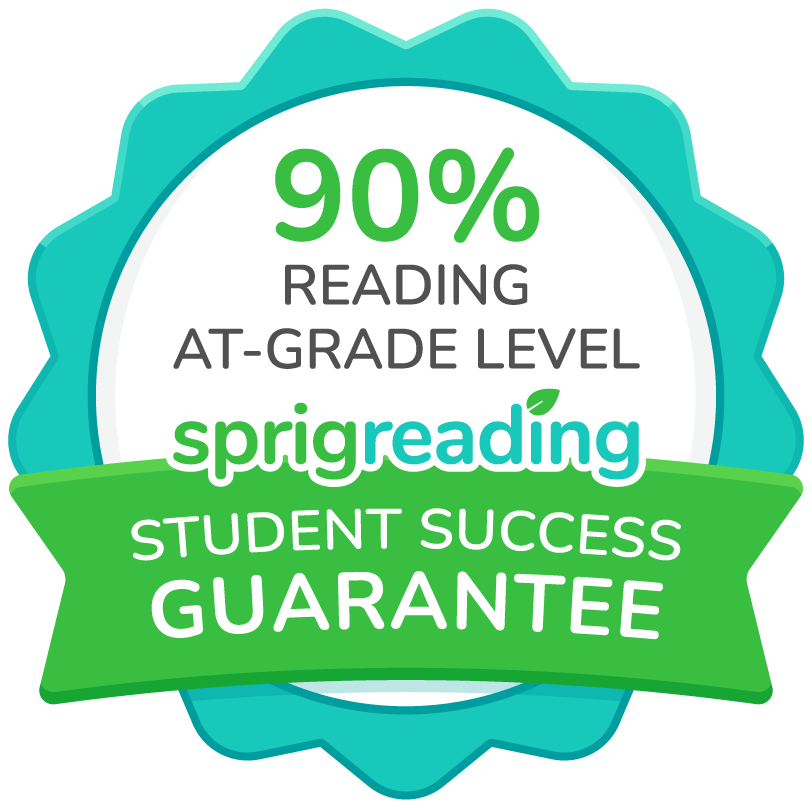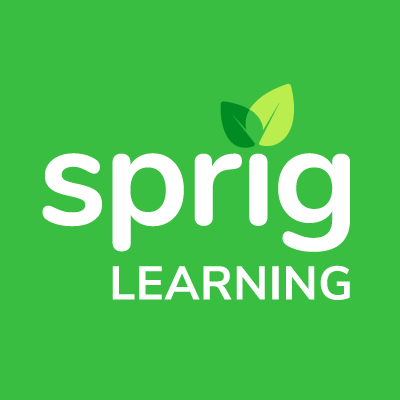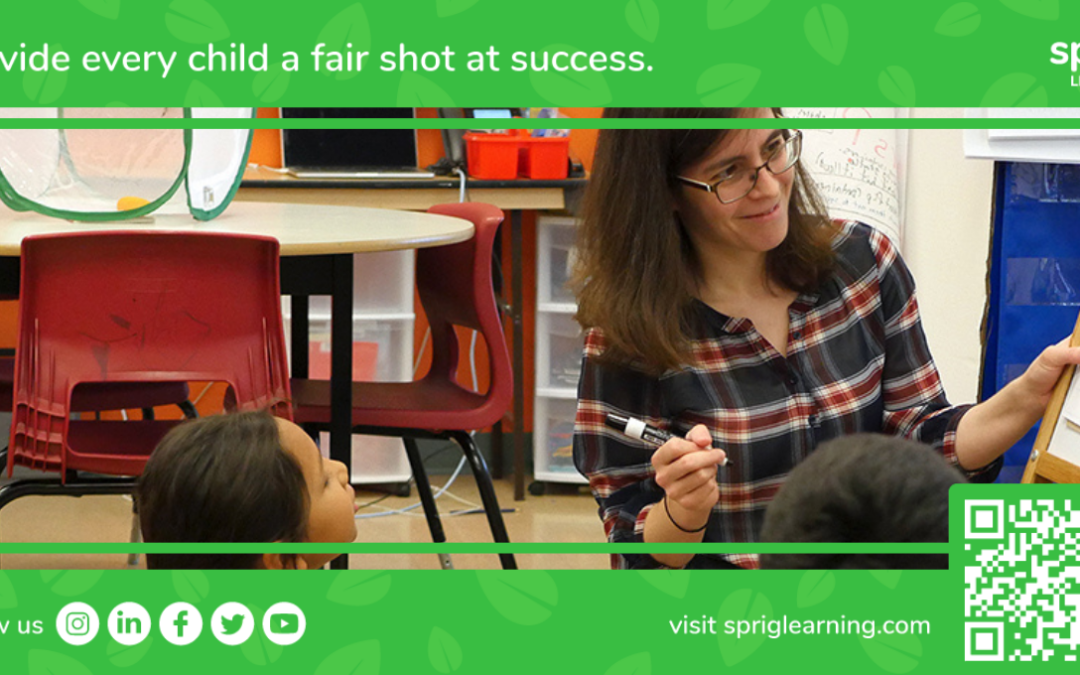Tiered instruction frameworks have become a cornerstone in addressing diverse student needs in early literacy.
Two widely used models, Multi-Tiered System of Supports (MTSS) and Response to Intervention (RtI), provide structured approaches to delivering interventions and improving literacy outcomes.
In a 2023 survey featured on Education Week, 60% of participating districts and schools said that they had well established MTSS systems or were in the beginning phases of implementing.
Another 36% said that they were currently in the midst of rolling out such a system, indicating the framework’s soaring popularity in recent years.
Literacy was the biggest focus of the framework, beating out other types of interventions, such as math, behavior, attendance and social-emotional learning.
RtI is very popular itself, with another survey indicating that approximately 70% of school districts with elementary schools implement them, primarily for literacy.
With tiered instruction widely embraced in early literacy, this blog breaks down its key aspects.
It clarifies the difference between tiered and differentiated instruction, explores the relationship between MTSS and RtI, and unpacks the three-tiered pyramid structure of these models.
Finally, it covers the evidence-based for these frameworks, before going into actionable strategies at each tier.
Understanding Tiered Instruction and Differentiated Instruction
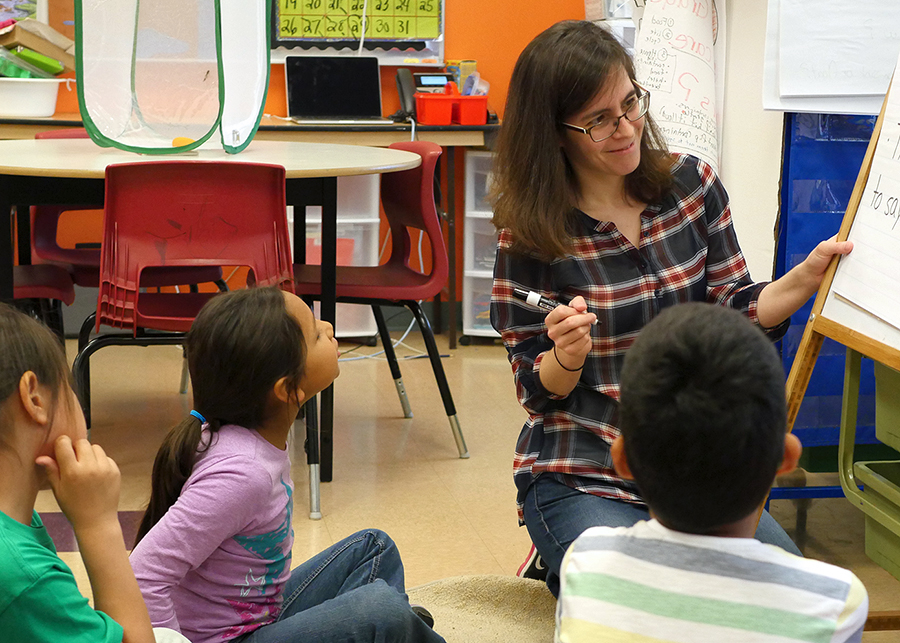
Tiered instruction adjusts the instructional approach based on group size.
Tiered instruction includes whole-class instruction for all students, small-group support for those at risk, and individualized instruction for students with ongoing challenges. Each tier serves a distinct purpose and looks very different in practice.
Differentiated instruction on the other hand, consists of varying the instruction by either content, process, assessment or learning environment.
It’s a topic covered extensively by Sprig Learning because of its large scope, and because of the many ways instruction can be differentiated to meet diverse student needs.
Differentiated instruction is not restricted to any particular tier in tiered instruction. Instruction can be differentiated at any tier.
Tiered instruction can be thought of as only one example of differentiated instruction, where differentiation occurs by varying the group size in which students are taught.
Deciphering the Relationship Between MTSS and RtI Frameworks.
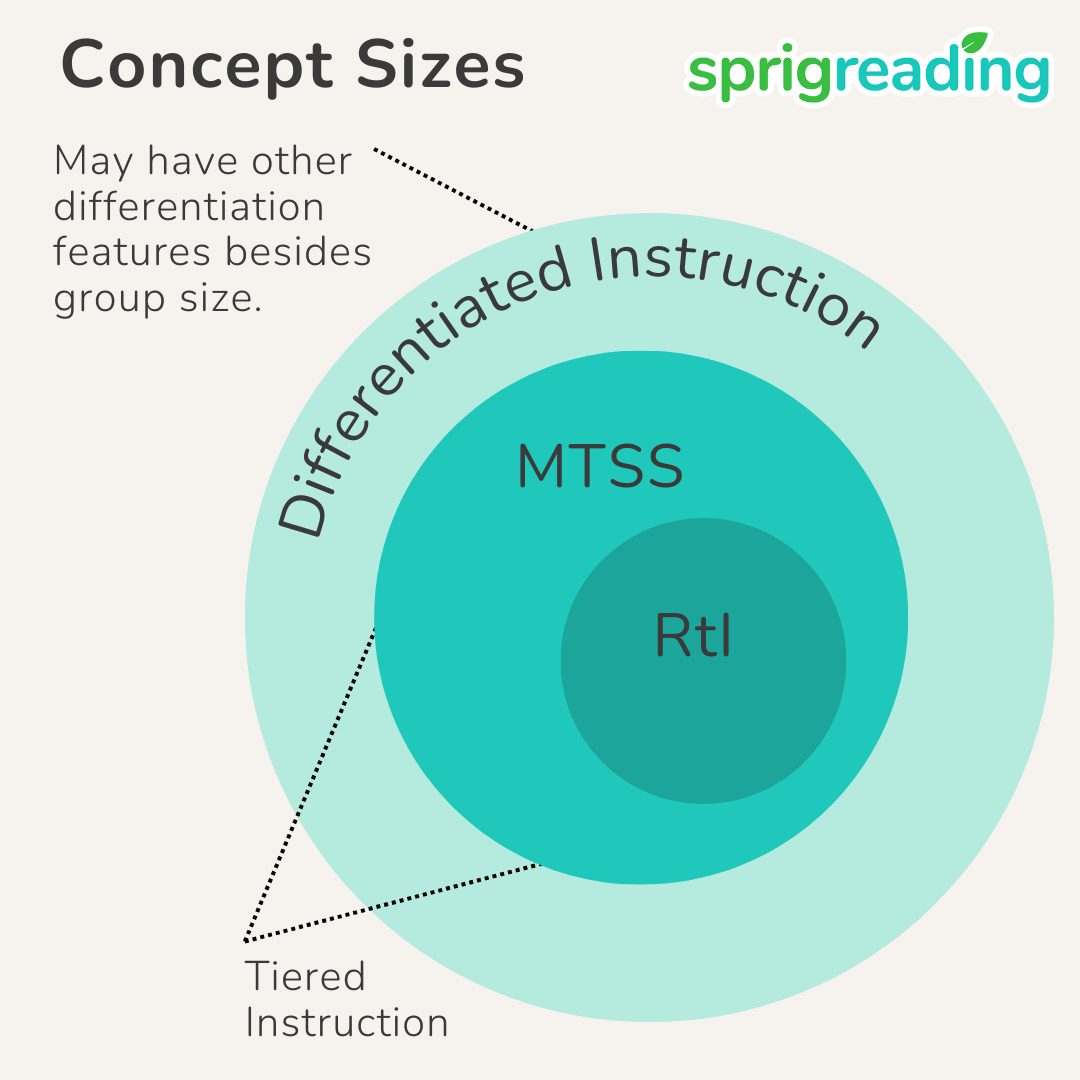
Both the MTSS and RtI frameworks share a three-tiered structure and a commitment to continuous progress monitoring and data-informed practices.
MTSS is a comprehensive framework that integrates academic, behavioral, and social-emotional supports to ensure all students succeed.
It emphasizes proactive and preventive measures, data-driven decision-making, and collaboration among educators.
RtI, often considered a subset of MTSS, focuses primarily on academic interventions.
It identifies struggling students early and provides increasingly intensive support to meet their needs.
So at first glance, MTSS and RtI are very similar with MTSS encompassing RtI and extending beyond it, making MTSS the more comprehensive framework.
However, choosing a specific approach matters for schools, which is why we examine the tiers that are associated with the two frameworks.
What are the Different Tiers in MTSS and RtI?
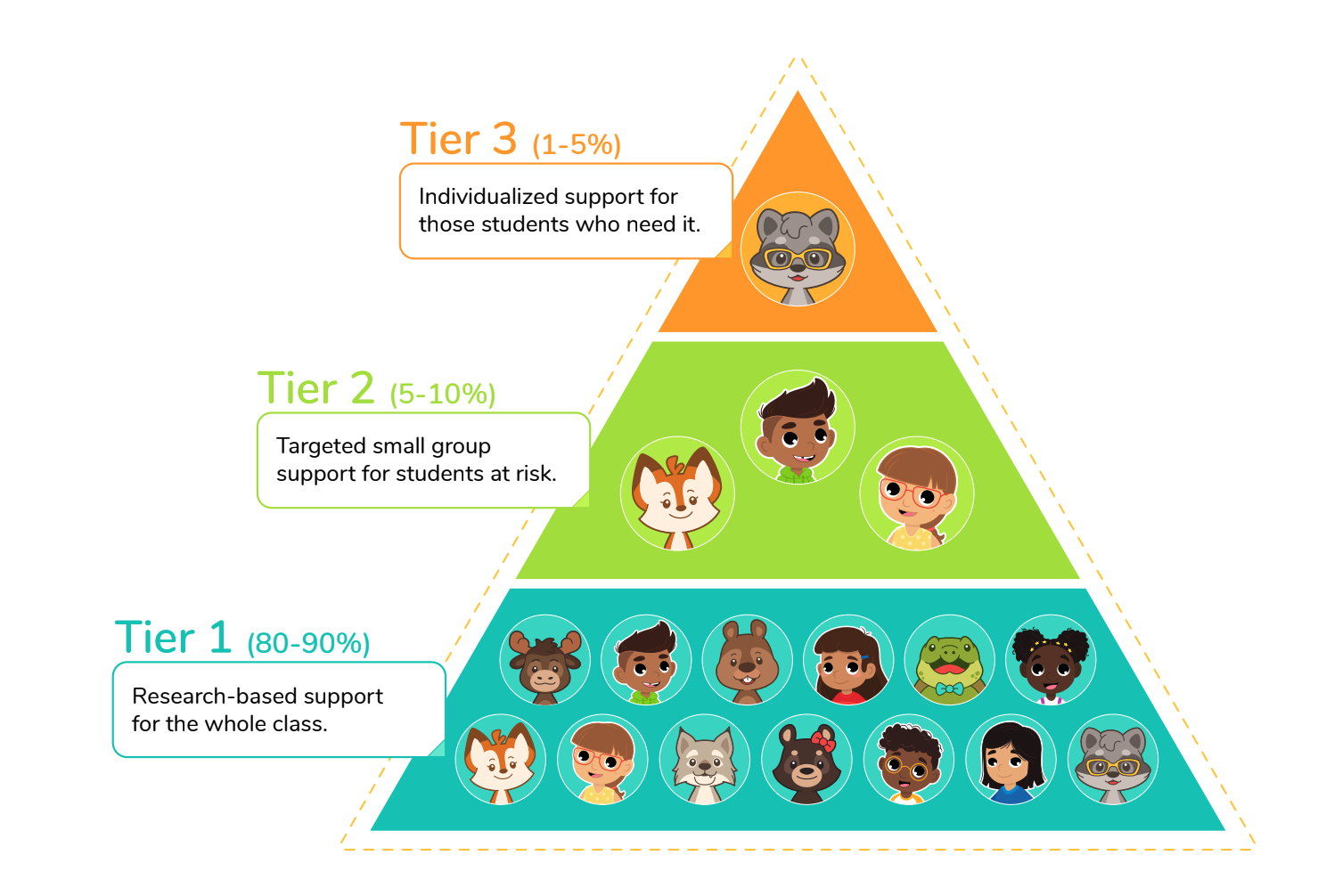
In MTSS, schools typically implement three tiers for academic support, with parallel tiers available for behavior:
Tier 1
Research-based core instruction provided to all students, emphasizing prevention and early intervention.
Tier 2
Targeted interventions for students at risk, featuring rapid response strategies and frequent progress monitoring.
Tier 3
Intensive interventions designed for individual students, incorporating diagnostic assessments and high-intensity support.
Examples of RtI three tier pyramids are very similar to the MTSS pyramids with its three tiers.
The difference lies in the scope of each of the tiers.
In RtI, it’s the students who receive support, in MTSS, everyone including teachers and support staff receive support.
Also, in RtI, the focus is on students, whereas in MTSS, the focus is on the school system, and even outside the system, which includes the home of the student and the community.
Regarding what should be used, Dr. Adena Miller, who has managed both MTSS and RtI models at the state and district level, has the following advice, published on McREL, a non-profit, non-partisan education research and development organization.
“If your educators see RtI as a means for getting students into special education, then a shift to MTSS is probably significant. However, if your implementation looks a lot like the definition of MTSS (integrated, preventative, problem-solving approach), then the shift is likely mere semantics.”
Evidence Supporting MTSS and RtI Frameworks
works

Regardless of a school’s preferred tiered instruction framework, research says that both the MTSS and RtI models are effective, if they are used in the right way.
MTSS has had positive effects on academic outcomes. RtI has helped students achieve grade-level benchmarks.
Meta-analysis studies published in reputed journals confirm that small-group or individual interventions that include a foundational reading skills component, when provided to students with reading difficulties in Grades K-3, are likely to positively impact these students’ reading comprehension ability.
Also, given that MTSS and RtI are both tiered systems, research emphasizes the effectiveness of such systems in improving literacy outcomes.
The Institute of Education Sciences in their practice guide lists the following recommendations for multi-tier intervention in the primary grades that has strong or moderate evidence for improving literacy outcomes:
1)Screen all students in the beginning of the year and again in the middle of the year. Regularly monitor the progress of students who are at risk of not reading at grade level.
2) Provide intensive, systematic instruction on three foundational reading skills in small groups to students who score below the benchmark score on universal reading, three to five times a week for 20 to 40 minutes.
Thus, there is strong evidence supporting the use of both MTSS and RtI in early literacy, along with clear research-backed guidelines on their effective implementation.
Speaking of which, the next section explores best practices for each tier in depth.
Strategies for Enhancing Each Tier in MTSS and RtI
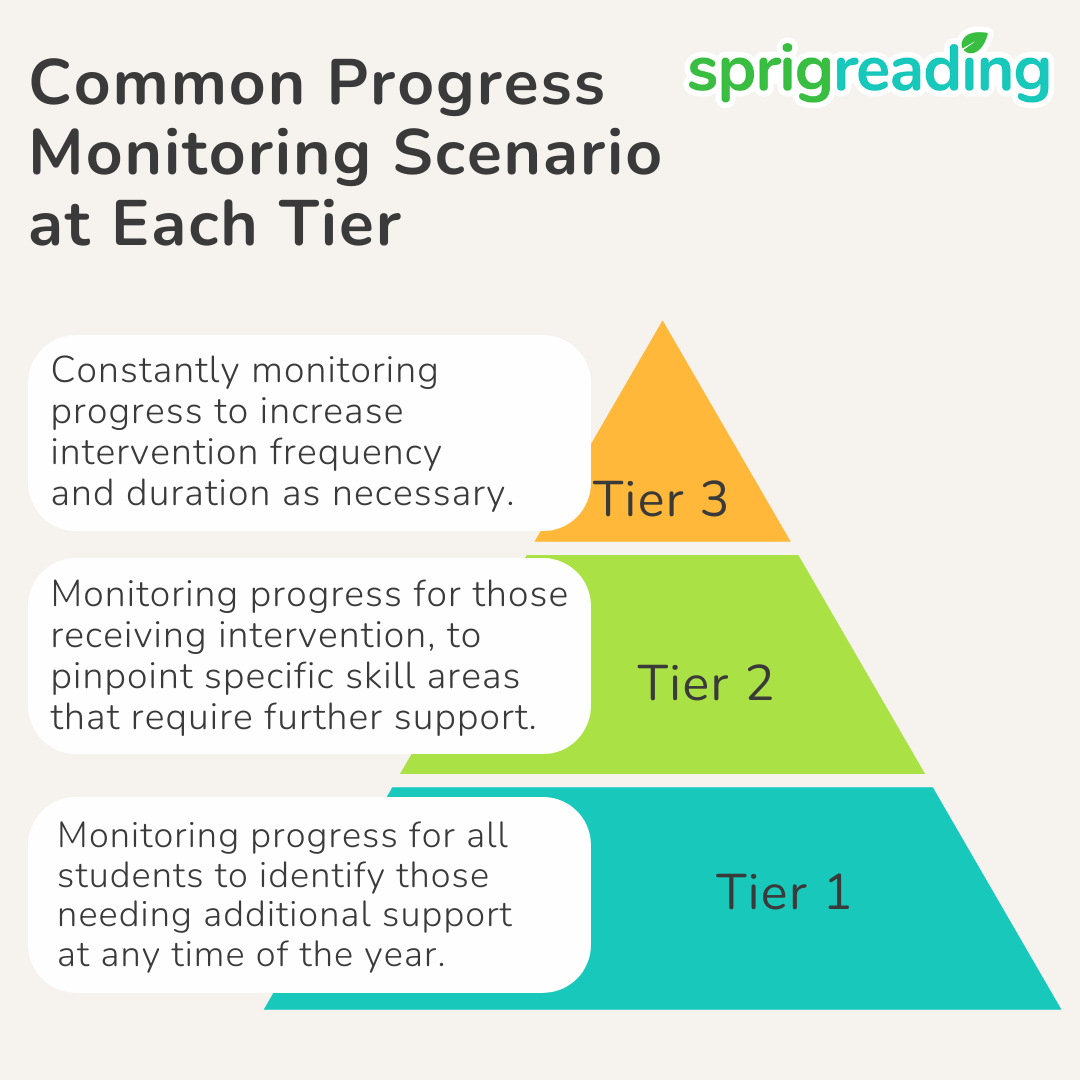
Tier 1: Strengthen Core Instruction
Core instruction is the foundation of tiered support. To enhance Tier 1:
- Implement evidence-based literacy programs.
Renowned early literacy scientist, Dr.Louisa Moats says in her paper on existing approaches helping goals of tiered instruction, “successful implementation of RtI depends on educators’ understanding of scientific research in reading psychology, linguistics, educational measurement, and instruction.”
- Use universal screeners to identify students at-risk early. Monitor progress of these students along with the whole class to identify others needing support.
- Incorporate differentiated instructional strategies to address diverse learning needs.
Tier 2: Enhance Small Group Instruction
For students requiring targeted support:
- Use diagnostic assessments to identify reading skill gaps.
- Use progress monitoring assessments to pinpoint specific skill areas that students need more practice or instruction in.
- Group students by similar needs to maximize instructional impact.
Tier 3: Intensify Interventions and Monitoring
Tier 3 requires the most intensive support and frequent monitoring:
- Conduct individualized assessments to tailor interventions.
- Increase intervention frequency and duration of interventions as necessary by constantly monitoring progress.
Successfully Applying Tiered Instruction At Your School
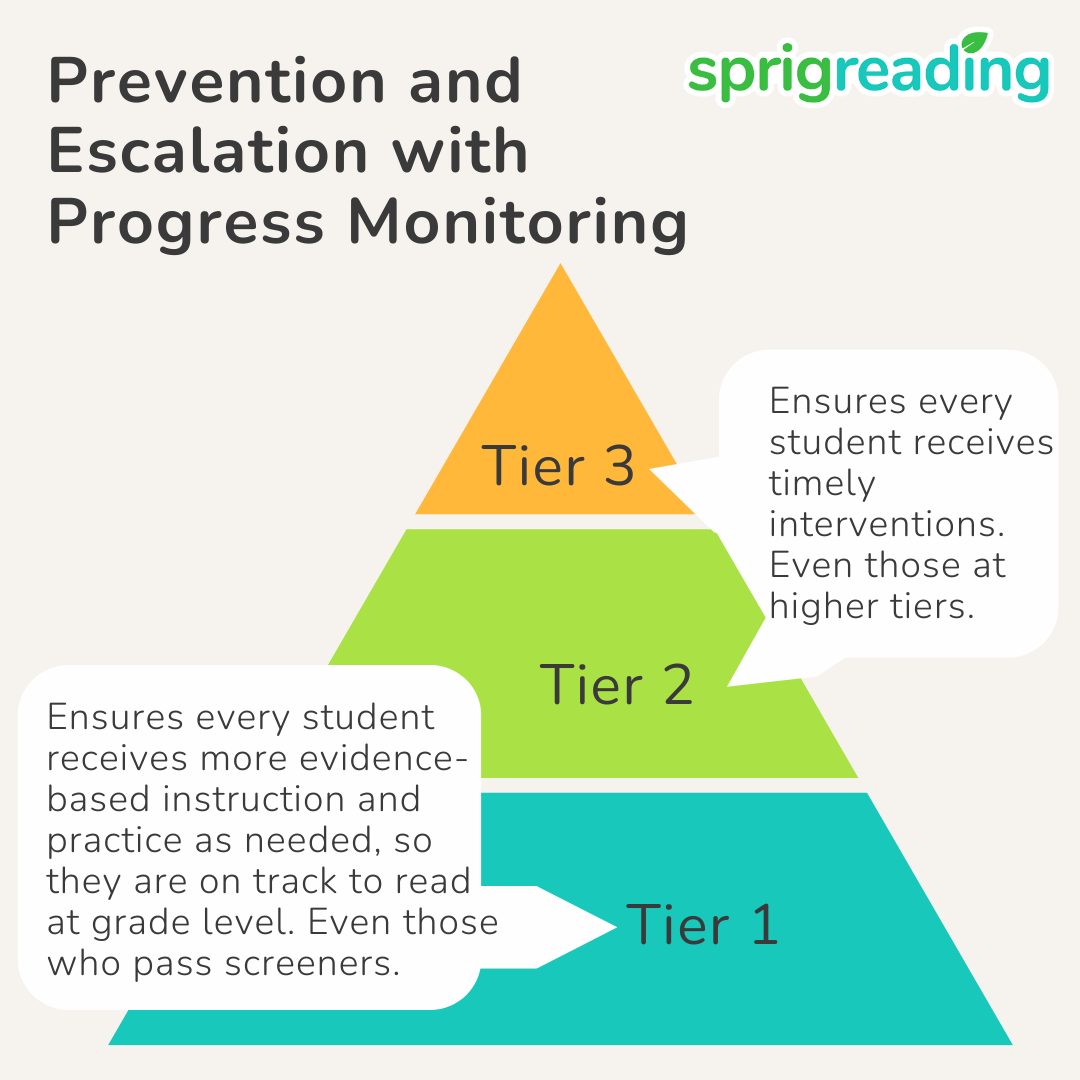
Hopefully, this article was useful in better understanding MTSS and RtI. Both provide evidence-based frameworks that empower schools to meet the diverse needs of their students.
By following the advice in the previous sections, it’s possible to strengthen instruction and intervention in all three tiers.
Tools like Sprig Reading streamlines the assessment process at each tier, and makes progress monitoring quick and intuitive for teachers.
Monitoring progress at tier 3 may seem obvious, given the urgency of each of those cases. But what about tiers 1 and 2? Is core instruction sufficient, or is differentiated instruction required?
If differentiated instruction is needed, assessment data is essential for making informed decisions. What type of assessment data?
In tier 2, point-in-time or snapshot assessment data from screeners or even diagnostic assessments will likely not be enough to make timely decisions. For example, the student is not showing any improvements, they may need individualized support more urgently.
But for this, more frequent and immediate information is needed, which can only come from progress monitoring.
Similarly at tier 1, while strong evidence-based core instruction can be delivered to all students, there is a high likelihood that some students will need more help than others in certain foundational skills. They may even need to be grouped together to receive small-group instruction.
Unaddressed needs in tier 1 can push students into tier 2 over time. But without progress monitoring in tier 1, how will educators know when intervention is needed?
Whether proactively preventing students from slipping through the tiers or ensuring they receive timely support at the right tier, progress monitoring is essential in any tiered instruction framework.
Frequently track and monitor reading progress for every student.
